Prior to December 2017, which is when Synaptics first broke the news about in-display fingerprint scanning technology becoming a reality, not so many people outside China, India, and Southeast Asia knew about a smartphone vendor called Vivo. It is only after one of the biggest names in the biometrics business went public and confirmed that Vivo would be the first to launch a smartphone with an in-display fingerprint scanner that people got to know of this Chinese OEM. Well, as it is often said, the rest is history.
In case you don’t know much about Vivo’s phones, you are in the right place. In this post, we have populated a list of the best Vivo phones that money can buy right now, be it a budget phone, a midrange handset or even one of the few unique, high-end phones the company has been releasing over the recent months.
Best Vivo phones [November 2018]
| Category | USA | UK | India |
| Vivo Nex Dual Display Edition | Price to be confirmed | Price to be confirmed | Price to be confirmed |
| Vivo Nex S | $758 | £699 | INR 44,990 |
| Vivo Nex A | $568 | NA | NA |
| Vivo X23 | Price to be confirmed | Price to be confirmed | Price to be confirmed |
| Vivo X21 | $405 | £409 | INR 31,990 |
| Vivo V11 Pro | NA | £440 | INR 25,990 |
| Vivo V9 | $280 | £351 | INR 23,990 |
| Vivo V9 Youth | $229 | NA | INR 13,990 |
| Vivo Y71 | NA | NA | INR 10,990 |
Note that Vivo phones are not officially sold in the U.S., UK, and many other markets across Europe, but with big-name retailers like Amazon and a bunch of others from China, you can still find a way to ship most, if not all, Vivo phones to whatever destination you want. Those in Russia are lucky as the company has an established presence that makes it easy to buy select Vivo phones.
Still, make sure you confirm that the device is compatible with your local network providers before shipping in one of these.
Vivo Nex Dual Display Edition
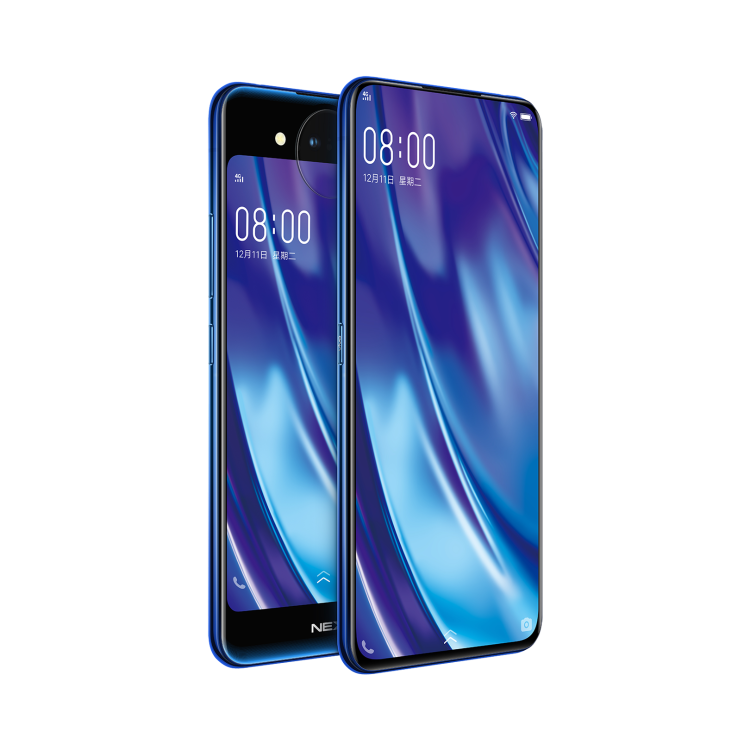
The sequel to the largely experimental Vivo Nex is here. Dubbed Vivo Nex Dual Display Edition, the most outstanding feature of the phone is, as you may have guessed, the dual display design. The main screen has grown a little smaller than its predecessor, featuring a 6.4-inch OLED full HD+ (2340 x 1080 pixels) display screen while the rear screen is a 5.5-inch 16:9 OLED panel with a 1080p resolution. The front screen leaves no bezels while the back panel sents you back to 2016 and before – an era of large bezels.
Specs
- 6.4-inch Super AMOLED, FHD+ (2340 x 1080) front display screen
- 5.5-inch Super AMOLED FHD (1920 x 1080) rear display screen
- Qualcomm Snapdragon 845 processor
- 10GB RAM and 128GB non-expandable storage
- Tri-lens 12MP + 2MP + TOF 3D main camera
- 3500mAh battery
- Android 9.0 Pie
- Extras: Bluetooth 5.0, USB-C, 3.5mm audio jack, 3D Face Unlock, in-display fingerprint scanner, 22.5W Fast Charging (10V/2.25A), single bottom-firing speaker, etc.
The secondary display panel not only works as a camera viewfinder, but also the main display, too. That’s pretty cool, although it remains to be seen how practical it is. What also remains to be seen is the global pricing and availability of the Nex Dual Display Edition, which starts selling in China on December 29th priced at CNY 4,998, an equivalent of about $725 or INR 52,000.
Vivo Nex S

There are two variants of the Vivo Nex – the entry-level Nex A and the high-end Nex S (wallpaper download). It is the latter that is of our concern, especially if you are looking for a high-end Vivo smartphone. Unlike the Apex concept that was showcased at the MWC 2018, though, the in-display fingerprint scanner on the Vivo Nex S doesn’t cover an extensive area, rather, it mimics the design of Vivo X21 UD (more in this below), which was the first smartphone to adopt this technology.
The Vivo Nex S trades the infamous display notch for a motorized section on the top bezel that slides out whenever you need to use the front camera. It is for this reason Vivo says the Nex S has a screen-to-body ratio of 86%, which is pretty impressive.
Specs
- 6.59-inch Super AMOLED, FHD+ (2316 x 1080) display
- Qualcomm Snapdragon 845 processor
- 8GB RAM and 128/256GB non-expandable storage
- Dual 12MP + 5MP main camera
- 8MP front camera
- 4000mAh battery
- Android 8.1 Oreo
- 162 x 77 x 7.98 mm
- Extras: Bluetooth 5.0, USB-C, 3.5mm audio jack, in-display fingerprint scanner, fast battery charging, etc.
In China, the Vivo Nex S has a price tag of about $700 for the base model and up to $780 for the high-end variant with 8GB RAM and 256GB storage.
Vivo Nex A

If you really like the whole premise of the Vivo Nex but the price of the high-end Nex S is a little scary, there’s no going past it’s weaker brother, the Vivo Nex A. As you may have guessed, the fact that these two share a name means they also share a lot in terms of design, specs, and features. In fact, the only difference between these two is the processing power and fingerprint scanner placement, but everything else remains the same, as you can see below.
Specs
- 6.59-inch Super AMOLED, FHD+ (2316 x 1080) display
- Qualcomm Snapdragon 710 processor
- 6GB RAM and 128 non-expandable storage
- Dual 12MP + 5MP main camera
- 8MP front camera
- 4000mAh battery
- Android 8.1 Oreo
- 162 x 77 x 7.98 mm
- Extras: Bluetooth 5.0, USB-C, 3.5mm audio jack, rear-mounted fingerprint scanner, fast battery charging, etc.
Unlike the Vivo Nex S, the Nex A has a rear-mounted fingerprint scanner, packs a weaker Snapdragon 710 processor and has 6GB of RAM. In China, the Nex A goes for an equivalent of $600 and can be purchased in either Black or Red flavor.
But what if neither of these two is within reach? Read on…
Vivo X23

Earlier this year, the Vivo X21 made headlines by becoming the first smartphone to feature an in-display fingerprint scanner. As expected from any novel idea, the functionality of the feature had some issues here and there. Vivo set out to make improvements to this technology by throwing it on several other handsets, but it is the return of the X21’s successor, the Vivo X23, that puts this feature back in the spotlight, but that’s not all you get on the X23.
Specs
- 6.41-inch 1080×2340 19.5:9 Super AMOLED display
- Qualcomm Snapdragon 670 processor
- 8GB RAM and 128GB expandable storage (up to 256GB)
- Dual 12MP + 13MP rear camera
- 12MP front camera
- Android 8.1 Oreo
- 3400mAh battery
- Extras: Bluetooth 5.0, Fast battery charging, microUSB, 3.5mm audio jack, in-display fingerprint scanner, 4G LTE, etc.
The Vivo X23 is already selling in China priced at CNY 3498, which is about $510, but details about its global availability remain unknown. Still, the fact that its immediate predecessor, the Vivo X21, was sold outside China could mean the X23 is also coming to a shop near you.
Alternatively, you may also check out the Symphony Edition of the Vivo X23 that borrows the body of its slightly superior counterpart and swaps the processor with a Snapdragon 660 chipset and drops the RAM to 6GB. The main camera remains unchanged, but the front gets a massive 25MP shooter and as for the rest, including battery capacity and software, nothing changes.
In China, the Symphony Edition goes for CNY 2,789 in China, which is about INR 29,000.
Vivo X21 UD
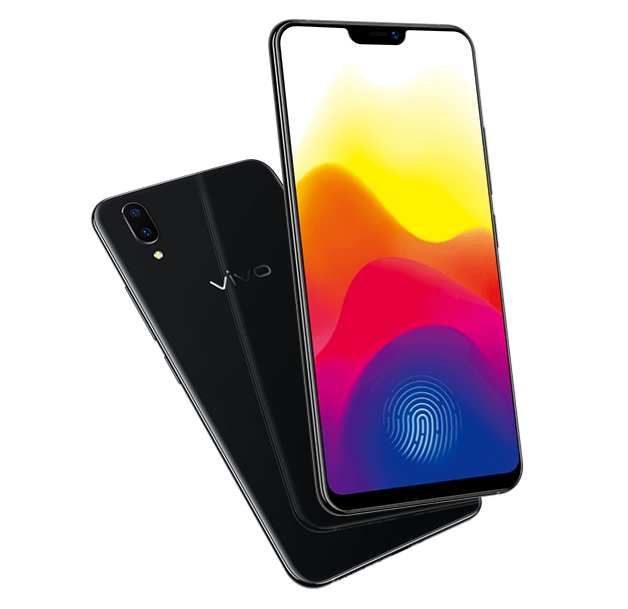 Like the Vivo Nex, the Vivo X21 came with two variants: the standard X21 and the high-end X21 UD. Our concern is the latter version, which is the one that ships with an in-display fingerprint scanner while the standard model has a rear-mounted scanner. This is also a phone for lovers of the notch, something the slide-out camera on the Vivo Nex was out to eradicate.
Like the Vivo Nex, the Vivo X21 came with two variants: the standard X21 and the high-end X21 UD. Our concern is the latter version, which is the one that ships with an in-display fingerprint scanner while the standard model has a rear-mounted scanner. This is also a phone for lovers of the notch, something the slide-out camera on the Vivo Nex was out to eradicate.
Specs
- 6.28-inch FHD+ (2280 x 1080) Super AMOLED display
- Qualcomm Snapdragon 660 processor
- 6GB RAM and 128GB expandable storage (up to 256GB)
- Dual 12MP + 5MP rear camera
- 12MP front camera
- Android 8.1 Oreo
- 3200mAh battery
- Extras: Bluetooth 5.0, Fast battery charging, MicroUSB, 3.5mm audio jack, in-display fingerprint scanner, 4G LTE, etc.
From a specs point of view, the Vivo X21 UD is a great phone with just about everything you can ever want in a smartphone. However, the major deal breaker for many will be the use of a microUSB port instead of the new USB-C port. An awkward decision indeed, but if you are a fan of the UD, you may have to live with it. On the brighter side, Android P beta is already available for download, which is a great positive to take home.
In India, the Vivo X21 UD can be yours for INR 35,990, which is about $520.
Vivo V11 Pro
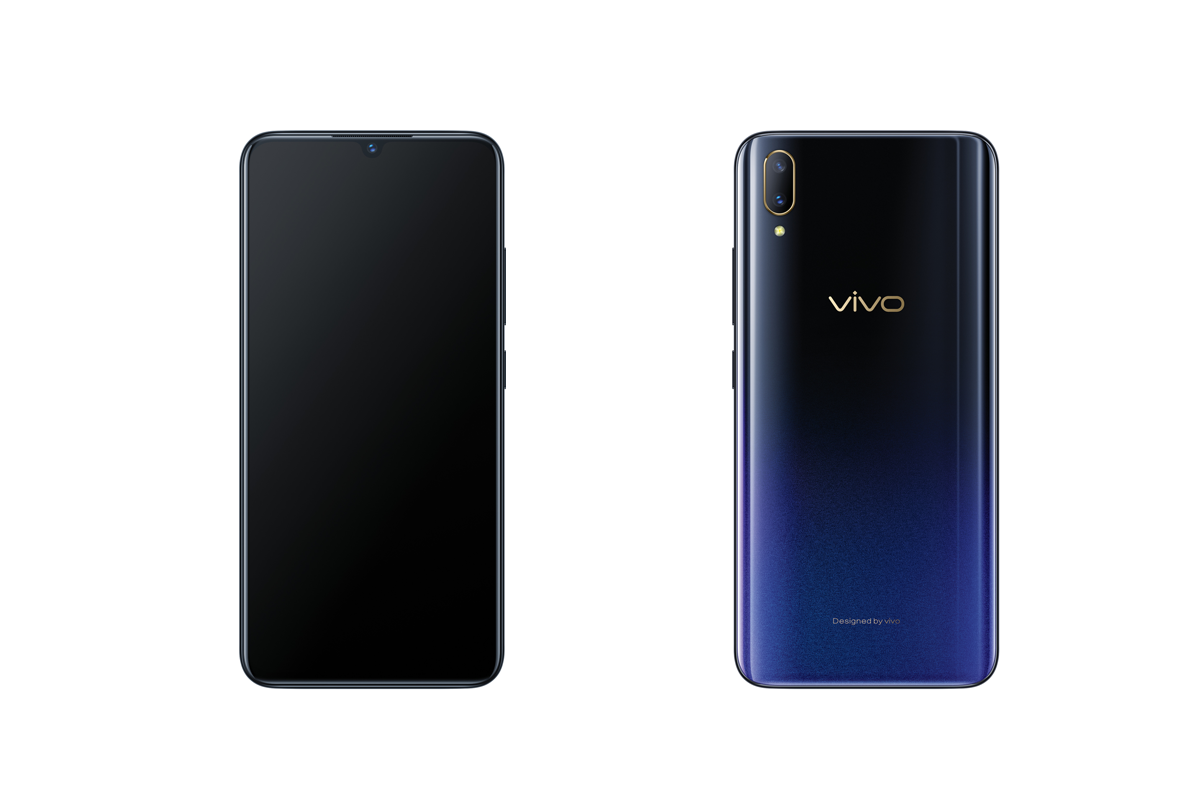 The Vivo V11 Pro is the latest midranger the company has brought to India, obviously as a successor to the still-capable Vivo V9. As a result, it comes just below the Vivo X21 in terms of raw power and even pricing, but you’ll be coming across a lot of familiar internals, including the in-display fingerprint scanner that has now become a thing for many Chinese vendors and not just Vivo.
The Vivo V11 Pro is the latest midranger the company has brought to India, obviously as a successor to the still-capable Vivo V9. As a result, it comes just below the Vivo X21 in terms of raw power and even pricing, but you’ll be coming across a lot of familiar internals, including the in-display fingerprint scanner that has now become a thing for many Chinese vendors and not just Vivo.
Specs
- 6.41-inch 1080×2340 19.5:9 Super AMOLED display, 402 PPI
- Qualcomm Snapdragon 660 processor
- 6GB RAM and 64GB (expandable up to 256GB)
- Dual 12MP + 5MP main camera
- 25MP front camera
- 3400mAh non-removable battery
- Android 8.1 Oreo
- Extras: Bluetooth 5.0, microUSB port, 3.5mm audio port, in-display scanner, IR face unlock, etc.
The Vivo V11 Pro is available in India priced at INR 25,990 (about $360) and can be had in any of Starry Night, Dazzling Gold or Nebula color variants.
Vivo V9
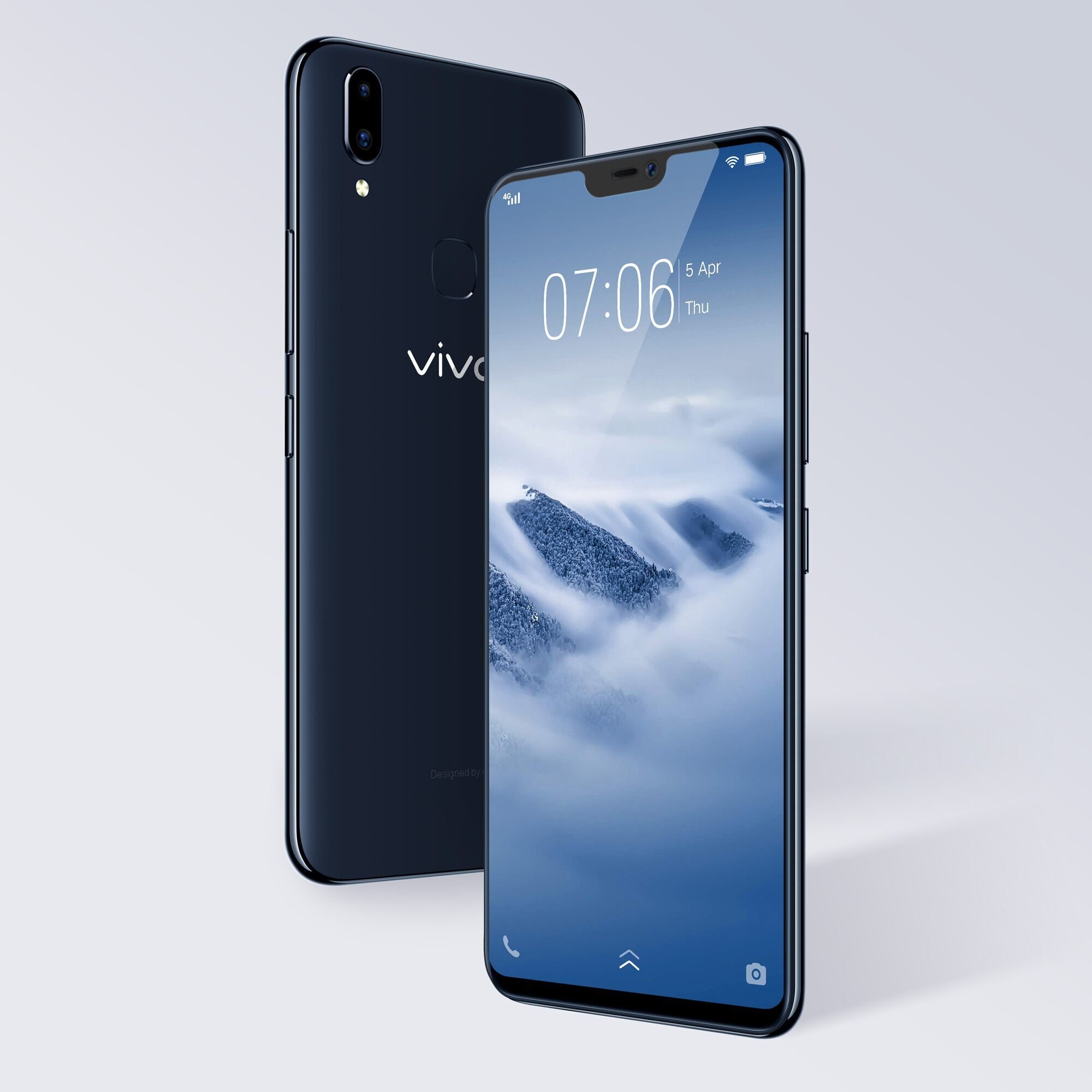
What if you are in the market for a Vivo smartphone with a huge notched display screen, a powerful processor, the latest software, and top of the line photography, yet either of the Vivo X21 UD or Vivo Nex handsets is doing any favors to your pocket? Well, your answer lies in the Vivo V9.
Specs
- 6.3-inch 19:9 FHD+ (2280×1080) LCD display
- Qualcomm Snapdragon 626 processor
- 4GB RAM and 64GB (expandable up to 256GB)
- Dual 16MP + 5MP main camera
- 24MP front camera
- 3260mAh non-removable battery
- Android 8.1 Oreo
- Extras: Bluetooth 4.2, microUSB port, 3.5mm audio port, rear-mounted scanner, Face unlock, Portrait Mode, Ultra HDR mode, selfie lighting, etc.
Vivo says the taller than usual aspect ratio led to a 90% screen-to-body ratio, but one thing that makes the Vivo V9 stand out is the massive 24MP front camera. Still, this is not to say the dual-lens setup on the back doesn’t deliver. In fact, it is the combination of these three camera lenses alongside a bunch of other software-related tweaks that drove us to do a comparison between the Vivo V9 and Apple iPhone X to determine which one is better in photography.
Related: Vivo V9 vs iPhone X: Camera review and comparison
In India, the Vivo V9 can be yours for INR 22,990, which is approximately $350. For all that the Vivo V9 has to offer, many will agree that this is the right price for this handset. Or shall we just call it Vivo’s jack of all trades?
Vivo V9 Youth
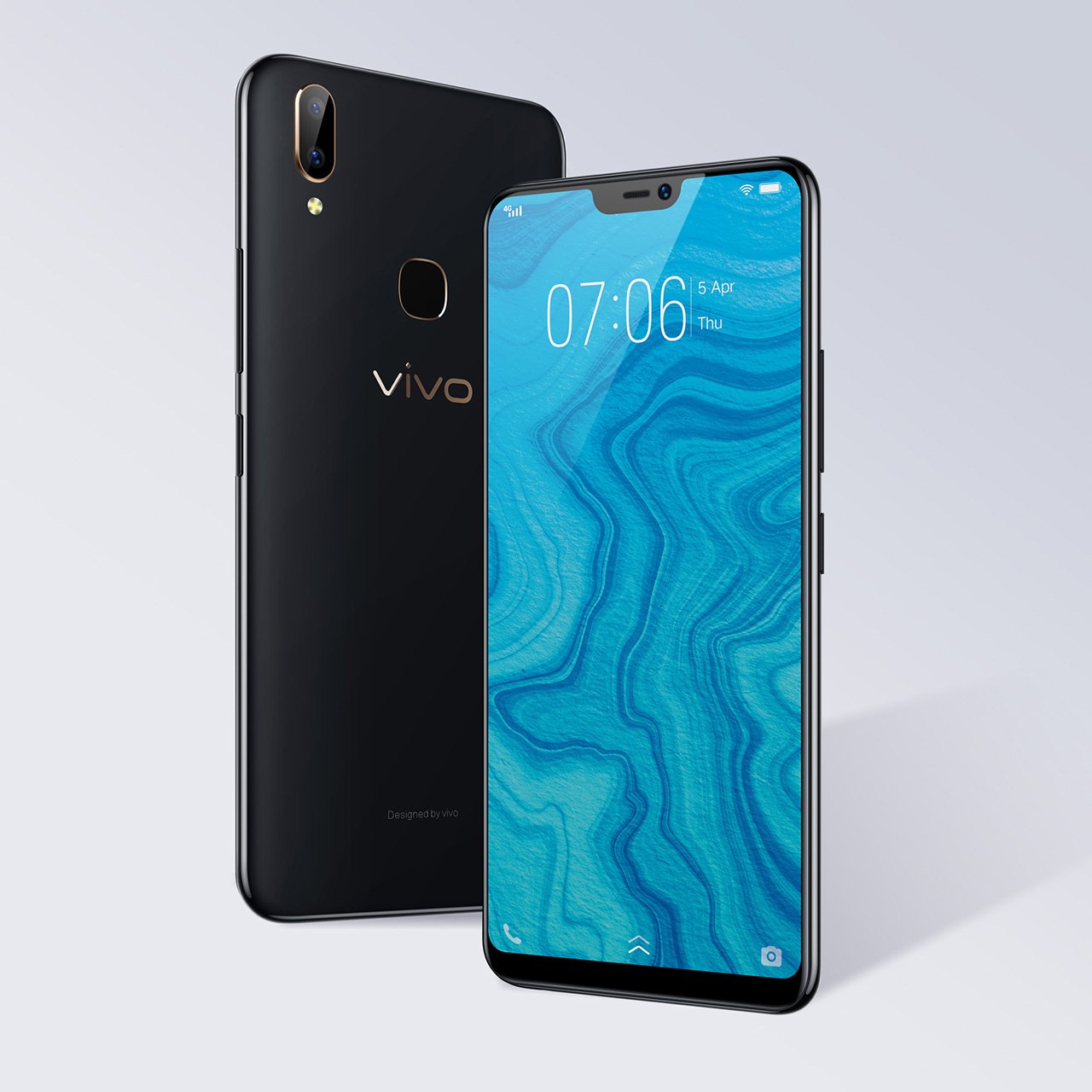
As the name suggests, this is a trimmed-down version of the Vivo V9 (also known as Vivo Y85), but on a second look, there isn’t much about this phone that will make anyone look down upon it, really. You are getting the same design language as the Vivo V9, the same display screen, memory, software version and even the battery capacity, among other stuff. But there are also certain things that make the Vivo V9 Youth what it is, as you can see in the specs sheet below.
Specs
- 6.3-inch 19:9 FHD+ (2280×1080) LCD display
- Qualcomm Snapdragon 450 processor
- 4GB RAM and 32GB (expandable up to 256GB)
- Dual 16MP + 2MP main camera
- 16MP front camera
- 3260mAh non-removable battery
- Android 8.1 Oreo
- Extras: Bluetooth 4.2, microUSB port, 3.5mm audio port, rear-mounted scanner, etc.
In India, the Vivo V9 Youth has a price tag of INR 17,990, which is about $260.
Vivo Y71
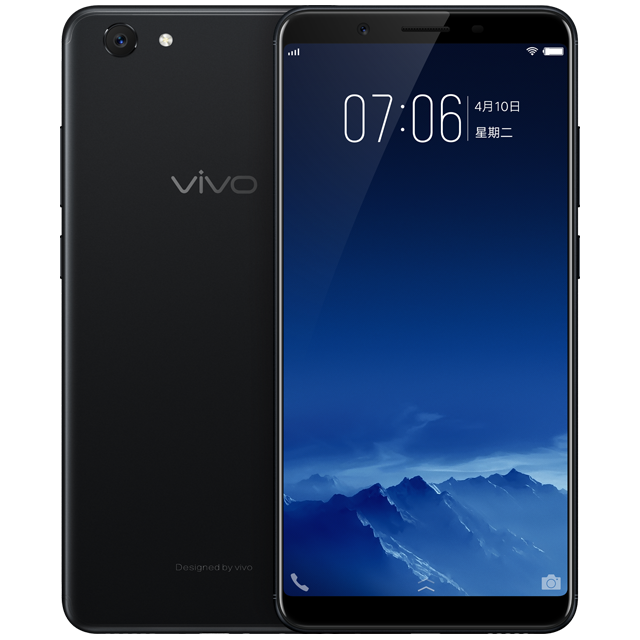
On the bottom end of the spectrum is the Vivo Y71. Unveiled in April 2018, the Vivo Y71 is an entry-level device and there are quite a good number of things that justify this tag. You are getting a massive 6-inch display screen with a super tall aspect ratio of 18:9, but the resolution is of an entry-level device.
The specs under the hood also typify an entry-level handset, but the phone has the latest software on board alongside a big enough battery to see you through a day or two, depending on how you use it.
Specs
- 6-inch 18:9 HD+ (1440×720) LCD display
- Qualcomm Snapdragon 425 processor
- 3GB RAM and 16/32GB (expandable up to 256GB)
- 13MP main camera and 5MP front camera
- 3360mAh non-removable battery
- Android 8.1 Oreo
- Extras: Bluetooth 4.2, microUSB port, 3.5mm audio port, FM radio, etc.
The Vivo Y71 dons a glass-made front panel while the rest of the body is made of aluminum, a rare combination in the Y71’s price category. You are also getting the latest Android 8.1 Oreo with support for Project Treble out of the box.
In India, the Vivo Y71 has a modest price tag of just INR 10,990, which equates to about $160.
Vivo might be among the top 5 smartphone vendors in the world right now, but this is mostly because of its popularity in China, which has over 500 million smartphone users. The company has also made a strong case for itself in India and it’s slowly spreading to other markets across Asia, Europe, and Africa.
Granted, getting hold of a Vivo phone in some regions can be an uphill task, but thanks to the internet and the many online shopping platforms we have today, it shouldn’t be a problem getting hold of one of these best Vivo phones.





